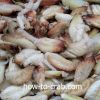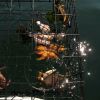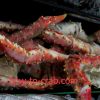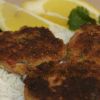All About the Coconut Crab
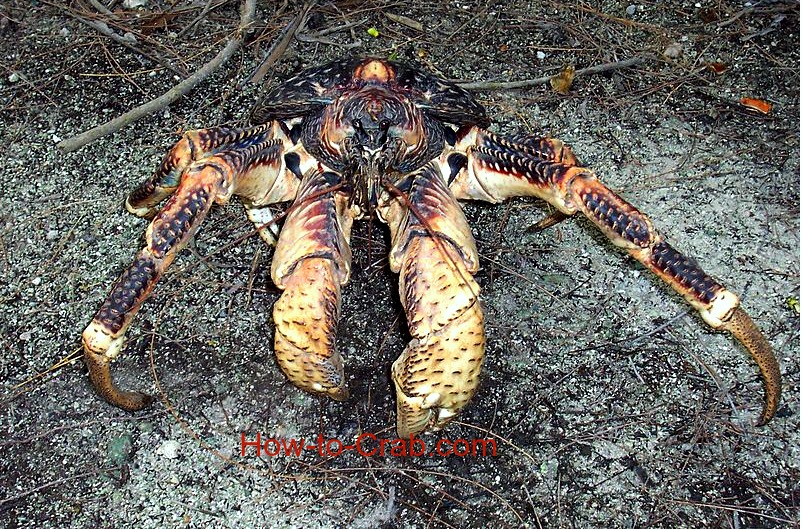
The coconut crab is a type of land-living crab which is sometimes known as the ‘robber crab’ or ‘palm thief crab” or in more recent times (as in right now, I just made this up because…come on… look at that beast!) ‘Skull crusher.’ At one meter from head to tail and weighing in upwards of 10 pounds (think of a fat three month old baby) it is the largest land-living arthropod in the entire world.
They are the most active at night, have the abilities to climb trees and can crack open a coconut with its massive pincers that might just be stronger than steel. It sounds like they are straight out of a comic book but in reality they are a perfect example of evolution…
Their closest cousin is 1/100 of its size…the hermit crab. But unlike the hermit crab the coconut crab barely gets its feet wet. They may start their life in the ocean but they don’t stay there for long, a month tops.
A female crab will release her eggs into the ocean where they hatch into larva creatures called zoeas develop into glaucothoe and head out of the water in search of a shiny new shell it can call home for a few weeks. It then rids itself of the shell, develops lungs and like a true villain -goes underground.
At this stage in its life it is becoming an adult crab, its abdomen hardens, it makes itself a burrow and will live its life on land. Its days are spent about two feet underground and nights are spent scavenging for food.
Only female crabs will return to the ocean to lay her eggs, and then it’s business as usual –hunting and gathering food to take back to its home. Most of the food in their diet is plant based –coconuts and other tropical fruit but on occasion it will scavenge for dead animals.
The meat from this crab is considered a delicacy some believe it to be an aphrodisiac. This is all terrible news for the coconut crab.
Don’t eat this crab! It is in danger…despite it being a massive and powerful crab and having no natural predators (other than humans).
People hunt them for their sweet meat. It once populated Australia and Madagascar but not one can be found there anymore.
Christmas island has the largest population of these crabs but the population is meager, comparatively. It can also be found on other islands around the Indian Ocean and the south Pacific.
Measures are being taken to protect the crab’s population. There are currently a number of legal restrictions in many areas regarding the fishing of this crab, including minimum size limits as well as limits regarding the number of crabs that may be harvested.
If you find yourself in the grips of one of these pincers the only way to coax the crab to release you from its painful grip is to rub its belly.
Their pincers are not the only threat they pose to humans… Coconut crabs may become poisonous depending on their diet. If the crab eats Cerebra manghas, a common type of sea mango found in these parts, it may become poisonous to humans because of the presence of certain steroids in the sea mango. The consequences of eating this crab may be cardiac arrest.
Return from Coconut Crab to How to Crab Home


